Picture this. One day you decide you are going to do a little remodeling. You start with the basement. First you knock down a wall. Maybe when you do, there is a tunnel. Maybe you go down that tunnel and find a hidden city. Wait, what!? Is this an Indiana Jones flick or your life? It’s actually one man’s life. Back in 1963, a man in the Nevsehir Province of Turkey, in an area known as Cappadocia, was redoing his house and discovered an entire city in his basement. Can you imagine what it would be like to find a hidden city behind a wall in your basement?
He ended up finding the ancient underground city of Derinkuyu. Derinkuyu was an entire city carved into the stone below Cappadocia.

Reaching some 60 meters down, it had 18 levels, and included residences, churches, food storage, wineries, and even a school. Yes, that’s right, wineries!

It was designed to house some 20,000 people as well as a number of livestock.

It features vents to the surface and several discreet entrances like the tunnel found behind the wall.

These hidden entrances suggest that the city was built as a precaution in order to shelter the population in times of war or natural disaster.

Cities like this were used during times of Christian persecution, so religious items would be placed on the lowest levels for protection.

The underground tunnels lead to giant rooms that housed schools, wine cellars, oil press rooms, churches, gathering halls, shops, tombs, arsenals, livestock corrals, escape routes and water wells separated from the surface water.
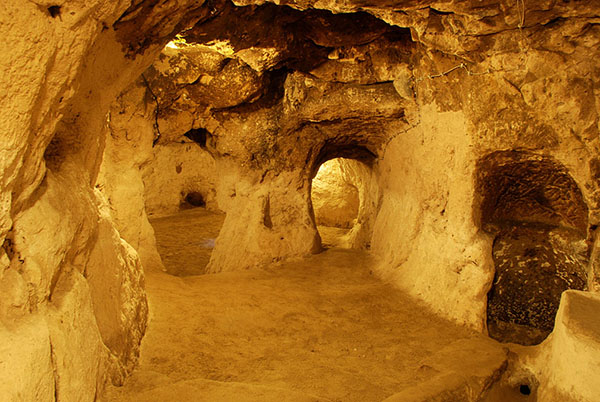
There are over 100 entrances to the underground cities but each and every one of them are hidden behind bushes or walls, even courtyards had entrances that were hidden but big enough to move livestock in and out of.
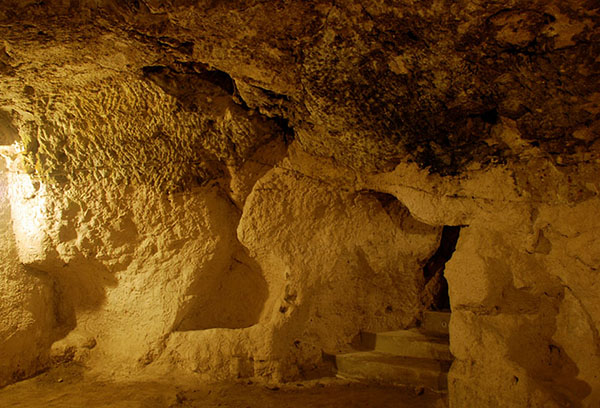
The entrances and other important rooms were guarded with giant stone doors. They were hand carved and weigh up to 1,00 pounds. Some are over 5 feet in diameter.
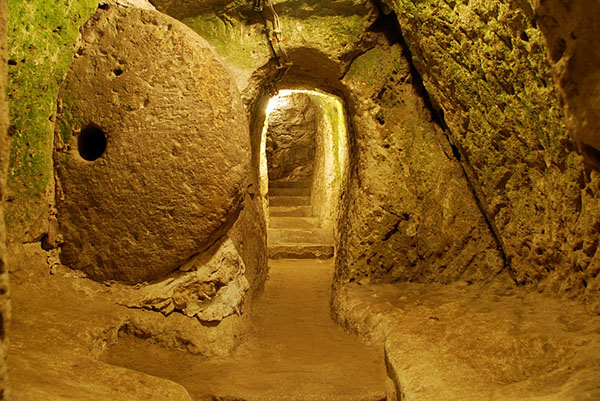
Underground river systems were used as drinking sources in order to avoid being poisoned by surface water susceptible to enemies above ground.
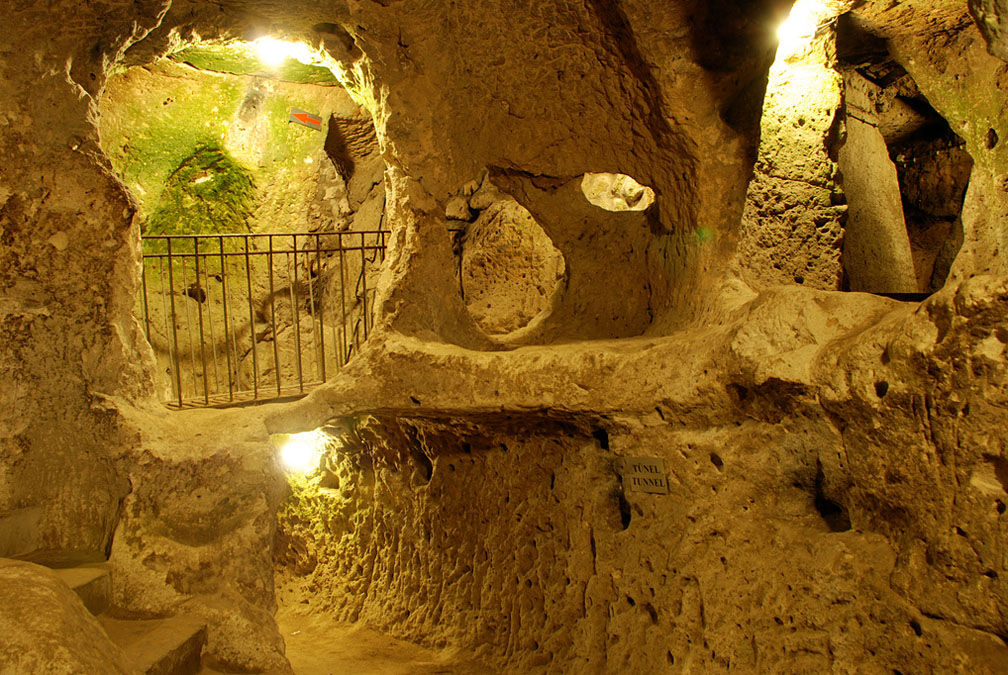
How amazing is this place? I’m astounded that it was completely built by hand. The size of the rooms is incredible. Right now about 10% of the underground city is open to the public but it was only discovered in 1963 so experts still have a lot to excavate and document.
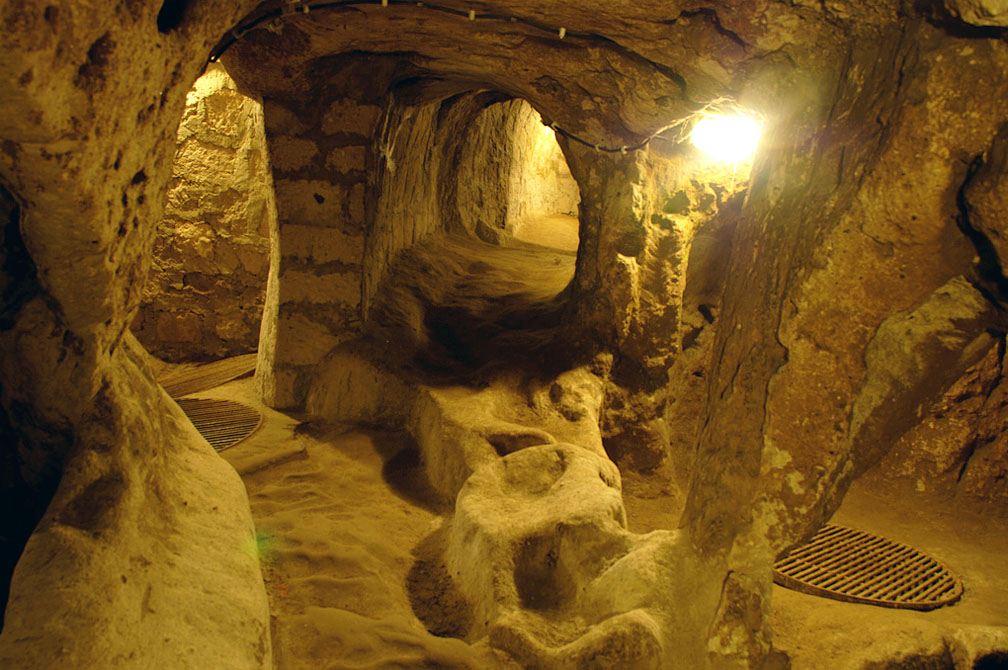
This is one of the well shafts. They built it so that the vent shaft did not reach the surface. This would prevent any poisoning from enemies on the surface.

This is a vertical staircase leading to a floor below. These lead to most levels and can be very dangerous.
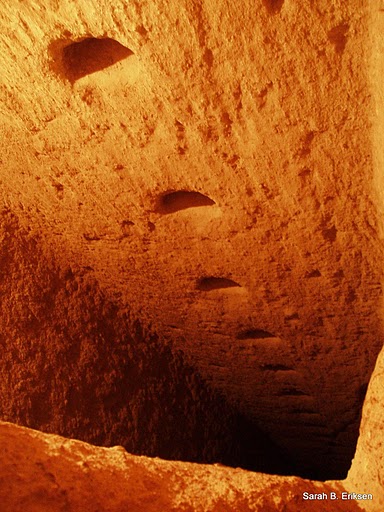
The tunnels were dug very narrow to force people to walk through them single file. This would give the people living in the underground cities an advantage over their enemies.
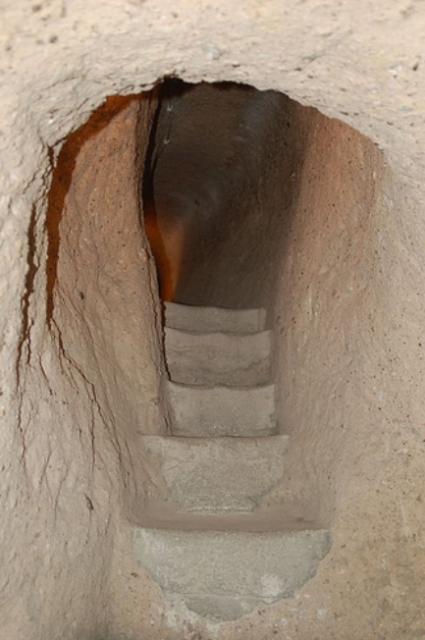
Based on research, the very elaborate underground city was connected via stairways and passages, and even connected to other underground cities through tunnels that stretched for miles. It’s thought to have been initially built during the seventh and eighth centuries BC, and was in continual, frequent use through the 12th century. Based on the church they found on the fifth and lowest level, it seems the population was Christian, and probably used the city during wartime. The city was also used as a refuge from the Mongolian invasion in the 1300s and up through the 20th century for Christian people fleeing persecution. It was finally abandoned for good in 1923. Most of Derinkuyu’s entrances are hidden. All of the five levels can be closed off separately with huge stone doors. The room intended for livestock and food stores, as well as a 55-meter shaft used as a well, means the inhabitants planned to be able to stay there for a very long period of time. There were even arsenals and escape passages in case things became desperate.

